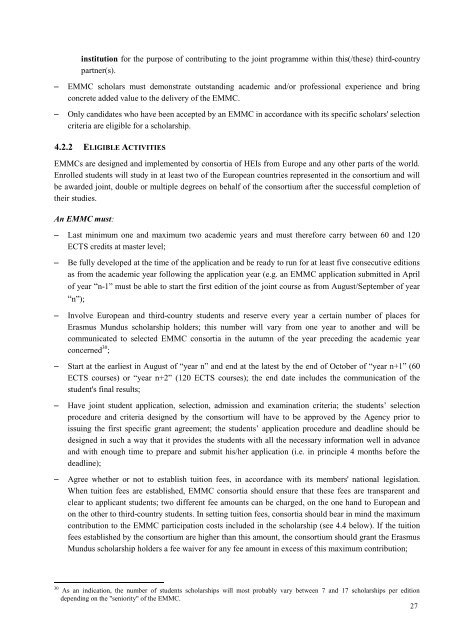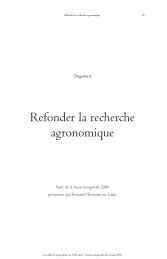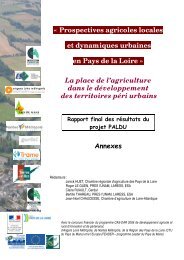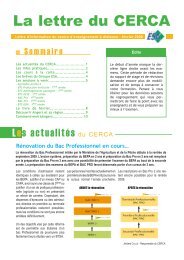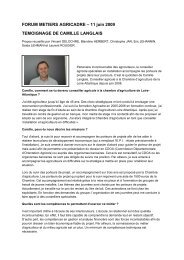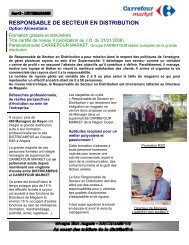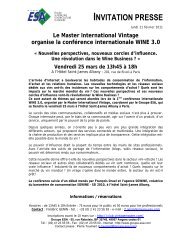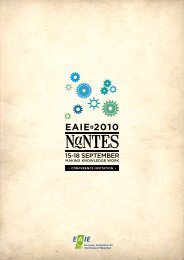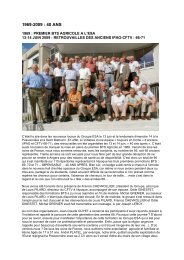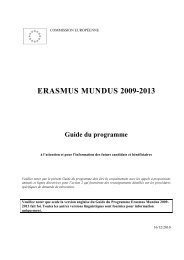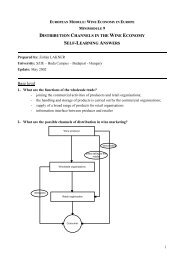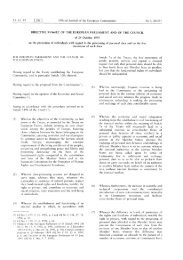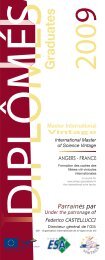ERASMUS Mundus Program Guide - EACEA - Europa
ERASMUS Mundus Program Guide - EACEA - Europa
ERASMUS Mundus Program Guide - EACEA - Europa
Create successful ePaper yourself
Turn your PDF publications into a flip-book with our unique Google optimized e-Paper software.
institution for the purpose of contributing to the joint programme within this(/these) third-country<br />
partner(s).<br />
– EMMC scholars must demonstrate outstanding academic and/or professional experience and bring<br />
concrete added value to the delivery of the EMMC.<br />
– Only candidates who have been accepted by an EMMC in accordance with its specific scholars' selection<br />
criteria are eligible for a scholarship.<br />
4.2.2 ELIGIBLE ACTIVITIES<br />
EMMCs are designed and implemented by consortia of HEIs from Europe and any other parts of the world.<br />
Enrolled students will study in at least two of the European countries represented in the consortium and will<br />
be awarded joint, double or multiple degrees on behalf of the consortium after the successful completion of<br />
their studies.<br />
An EMMC must:<br />
– Last minimum one and maximum two academic years and must therefore carry between 60 and 120<br />
ECTS credits at master level;<br />
– Be fully developed at the time of the application and be ready to run for at least five consecutive editions<br />
as from the academic year following the application year (e.g. an EMMC application submitted in April<br />
of year “n-1” must be able to start the first edition of the joint course as from August/September of year<br />
“n”);<br />
– Involve European and third-country students and reserve every year a certain number of places for<br />
Erasmus <strong>Mundus</strong> scholarship holders; this number will vary from one year to another and will be<br />
communicated to selected EMMC consortia in the autumn of the year preceding the academic year<br />
concerned 30 ;<br />
– Start at the earliest in August of “year n” and end at the latest by the end of October of “year n+1” (60<br />
ECTS courses) or “year n+2” (120 ECTS courses); the end date includes the communication of the<br />
student's final results;<br />
– Have joint student application, selection, admission and examination criteria; the students‟ selection<br />
procedure and criteria designed by the consortium will have to be approved by the Agency prior to<br />
issuing the first specific grant agreement; the students‟ application procedure and deadline should be<br />
designed in such a way that it provides the students with all the necessary information well in advance<br />
and with enough time to prepare and submit his/her application (i.e. in principle 4 months before the<br />
deadline);<br />
– Agree whether or not to establish tuition fees, in accordance with its members' national legislation.<br />
When tuition fees are established, EMMC consortia should ensure that these fees are transparent and<br />
clear to applicant students; two different fee amounts can be charged, on the one hand to European and<br />
on the other to third-country students. In setting tuition fees, consortia should bear in mind the maximum<br />
contribution to the EMMC participation costs included in the scholarship (see 4.4 below). If the tuition<br />
fees established by the consortium are higher than this amount, the consortium should grant the Erasmus<br />
<strong>Mundus</strong> scholarship holders a fee waiver for any fee amount in excess of this maximum contribution;<br />
30<br />
As an indication, the number of students scholarships will most probably vary between 7 and 17 scholarships per edition<br />
depending on the "seniority" of the EMMC.<br />
27


